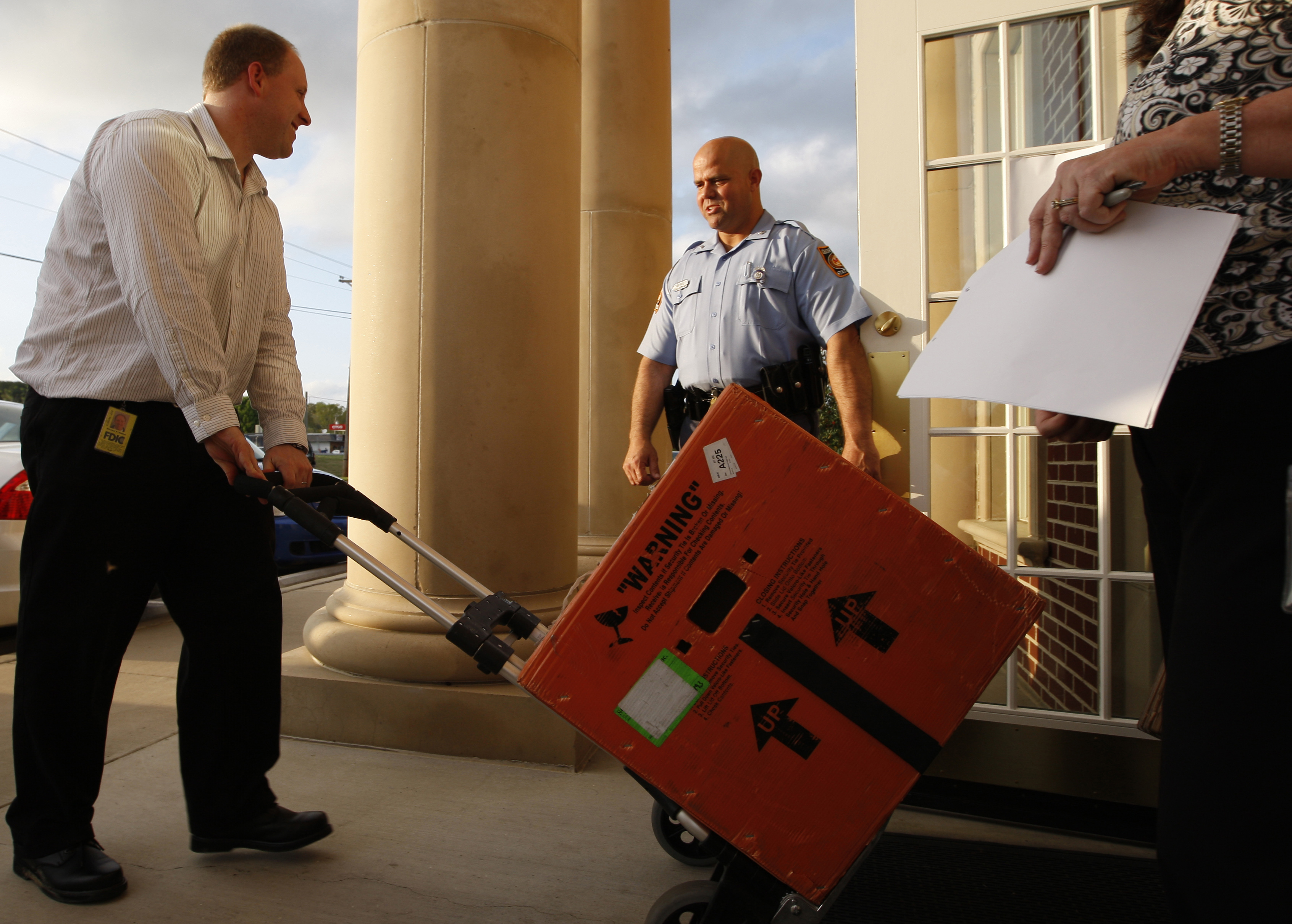The number of bank failures in the United States this year dropped by more than two thirds from the worst of the recession in 2010, but Georgia continued to lead the nation with the most bank failures during 2012.
Bank regulators shuttered 51 U.S. banks during 2012, down from 157 two years ago, while the number of troubled banks in the country has fallen for six consecutive quarters.
"We're entering the new year with a better economy and a healing industry," said Joe Brannen, president and CEO of the Georgia Bankers Association. "Georgia was one of the fastest growing states in the nation, but when that building virtually stopped on a dime during the recession a lot of banks in our state were caught with customers who couldn't meet their obligations.
"The good news is that the economy has improved, loan losses are going down while reserves are growing again and about 78 percent of our banks are now profitable," Brannen said.
Georgia had 10 bank failures this year, while Tennessee had only three.
Two area banks that failed this year -- Covenant Bank in Rock Spring, Ga., and Farmers Bank in Lynchburg, Tenn. -- were each acquired by other banks that have since recapitalized and build back the franchises. Covenant Bank was taken over by Stearns Bank of St. Cloud, Minn., while Farmers Bank was taken over by Clayton Bank and its sister bank, American City Bank.
Jim Clayton, the Knoxville mobile home magnate who owns Clayton and American City banks, said his banks took over the deposits, loans and employees of the failed Farmers Bank under an agreement with the FDIC.
"The fact that we had branches close to Farmers Bank made us an ideal acquirer because we already had boots on the ground in those markets," Clayton said. "I think it's worked out very well."
Clayton, who sold Clayton Homes to Warren Buffett's Berkshire Hathaway in 2003 for $1.7 billion, said real estate values are rising and loan losses are declining.
"Two years ago, it was really dark for our industry and we had to take our earnings and put them in loan loss reserves which wiped out any profits," he said. "But in this past year, we found we have excess reserves as foreclosures go down, loan delinquencies drop and the economy continues to improve. You can't say its easy or back to what it once was, but compared to a couple of years ago the banking industry is definitely looking a lot better."
U.S. banks are ending the year with their best profits since 2006, according to FDIC data. In the July-September quarter, the industry's earnings reached $37.6 billion, up from $35.3 billion a year earlier. By contrast, at the depth of the Great Recession in the last quarter of 2008, the industry lost $32 billion.
Banks also are lending a bit more freely. The value of loans to consumers rose 3.2 percent in the 12 months that ended Sept. 30 compared with the previous 12 months, FDIC data indicate.
Fewer banks also are considered at risk of failure. In July through September, the number of banks on the FDIC's confidential "problem list" fell for a sixth straight quarter. These banks numbered 694 as of Sept. 30 -- about 9.6 percent of all federally insured banks. At its peak in the first quarter of 2011, the number of troubled banks was 888, or 11.7 percent of all federally insured institutions.
"We are definitely on the back end of this crisis," says Josh Siegel, chief executive of Stonecastle Partners, a firm that invests in banks.
The Associated Press contributed to this report
